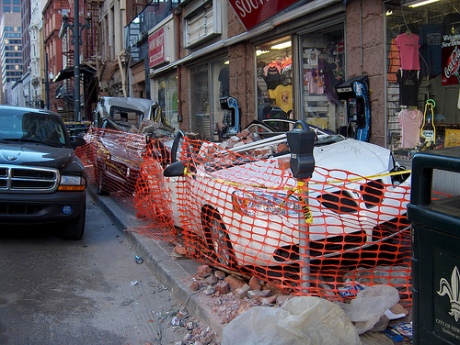The Business Sector
Similar to the DRC (Disaster Resistant Community) approach, “the reduction of hazard vulnerability must be a communnity based effort because a business designed and constructed to withstand extreme environmental forces will not necessarily protect against the disruption of critical linkages to other parts of the community. Disruption of linkages to suppliers, workers, infrastructure, or customers can cause a business to fail.” Thus even a business that has successfully mitigated threats to its building relies upon those whom depend upon its products or services, whom may still be in danger (Lindell and Prater, 2003).
Small businesses function as an important component of local economies, yet “recent studies reveal that small business in particular are ill prepared for the losses that can result from both the direct and indirect impacts of disasters. While the loss of an individual small business may not cause a significant impact on the local economy in terms of the earnings it generates or the number of people it employs, the collective losses of a number of small businesses from natural disasters may devastate a local economy (Yoshida and Deyle, 2005).
Consequently, the loss of a significant portion of the business sector in any neighborhood greatly reduces the ability of the local residents to recover from damages due to the loss of local economic ties. Neighborhoods with a higher density of commercial business establishments have a greater chance for a larger portion of those business owners to choose to repair or rebuild their establishments after such an event, although, at the same time, higher densities create the potential for higher total losses.
“Large housing losses in a community with little commercial loss and minimal infrastructure damage permits victims to at least keep their jobs and be able to focus on housing recovery” instead of searching for employment (Comerio, 1998, page). At the same time, however, the nature of business type in a community matter to a great deal because without a steady clientele, supermarkets, cafes and convenience stores are slow to reopen or operate only for limited hours (Green, Bates and Smyth, 2007). “When both housing and commercial sectors are heavily damaged, the real loss of the population and an [economic] base makes recovery issues quite” complicated (Comerio, 1998, page).
